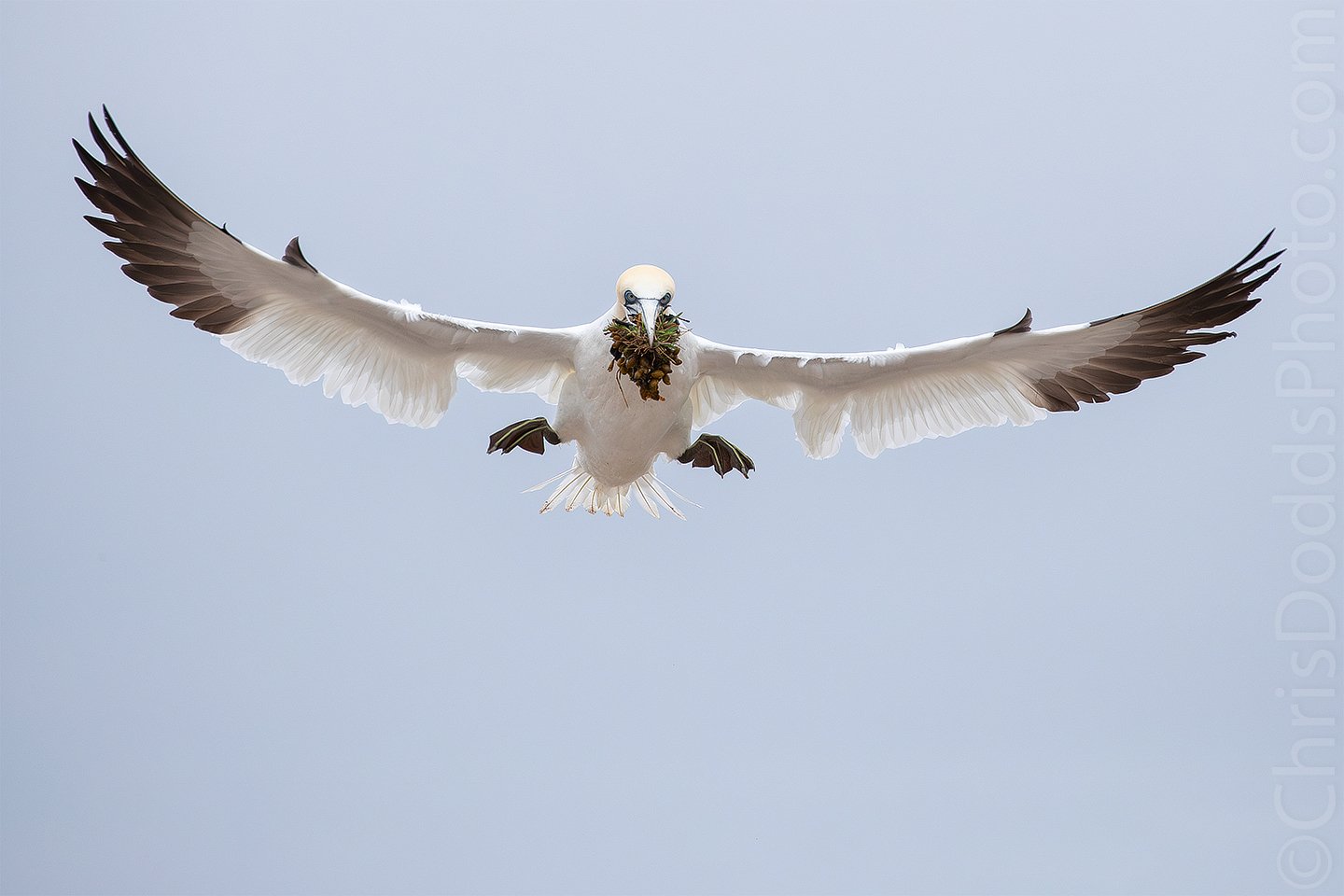Here is an image of a pair of Northern Gannets fencing made during my Gannets Galore and so much more workshop on Bonaventure Island in Quebec.
I worked hard to find a pair of Northern Gannets that clearly showed the difference between a normal eye and the eye of an Avian Flu survivor with an entirely black iris. I pre-visualized an image of a mated pair of fencing Gannets(see my last post HERE) like this: I wasn’t at all convinced that I would succeed because of the likelihood that both mates could have survived infection and developed the same black irises, or, worse yet, there wouldn't be any pairs with one of each eye colour.
What we know:
Shortly after Northern Gannets tested positive for High Pathogenicity Avian Influenza virus (HPAIV) H5N1, researchers started seeing Gannets with unusual iris colouring, ranging from mottled to entirely black. Gannets typically have piercing pale blue/grey eyes, so the black eyes were conspicuous and something no one had seen before. The combination of birds with black eyes being seen for the first time during the first known outbreak of HPAIV led researchers to suspect that the colouring of the black iris was linked to infection.
At the Scottish Bass Rock Northern Gannetry, Seventy-eight percent of the black-eyed birds tested had antibodies to H5N1, proving that the development was likely a direct consequence of a previous HPAI infection. Read a great article by Jude Lane of the UK Marine Conservation Science Team, RSPB, at the British Ornithologists’ Union Blog HERE.
Teams from Environment and Climate Change Canada and the Université du Québec à Rimouski are continuing to study the effects of avian flu on the Northern Gannets at the Bonaventure Island colony in Québec, and the Royal Society for the Protection of Birds are studying the effects at the Bass Rock colony in Scotland.




















